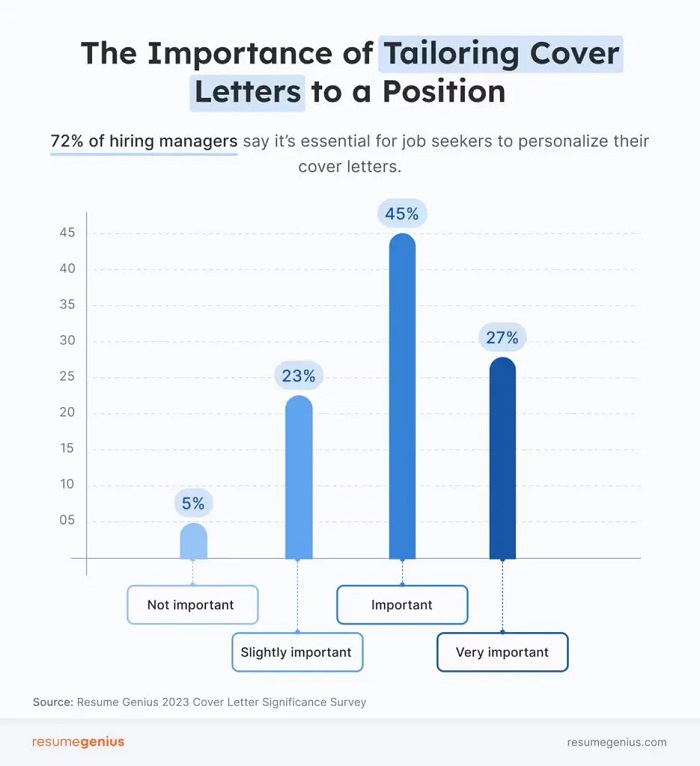Even with the rise of AI-powered hiring and automated job applications, cover letters remain a key part of the recruitment process. In 2025, 78% of recruiters still prefer candidates to include a cover letter, with 72% expecting one even when it’s optional. Here’s why cover letters continue to be a vital tool for job seekers:
For more insights on why cover letters remain essential in today’s hiring process, refer to this detailed analysis: https://www.simonstapleton.com/why-78-of-recruiters-still-want-to-see-cover-letters-in-2025/.
Why Recruiters Still Want Cover Letters
- Preferred by Hiring Managers: 78% of recruiters consider cover letters a crucial component of job applications.
- Shows Dedication: Submitting a cover letter, even when not required, demonstrates genuine interest in the role.
- Provides Valuable Context: Cover letters explain career changes, employment gaps, and unique experiences that may not fit neatly into a resume.
- Demonstrates Communication Skills: A well-structured letter highlights your ability to articulate ideas professionally, a skill that 78% of recruiters value.
- Helps Assess Cultural Fit: Recruiters analyze cover letters to gauge whether a candidate aligns with the company’s values and work environment.
Common Cover Letter Mistakes to Avoid
Even though a cover letter can enhance your application, certain mistakes can reduce its impact:
- Being Too Generic: A one-size-fits-all approach lacks personalization and fails to engage hiring managers.
- Repeating Your Resume: Instead of summarizing your resume, use your cover letter to tell a compelling story about your skills and experiences.
- Ignoring the Job Description: Tailor your cover letter by incorporating specific keywords and qualifications mentioned in the job posting.
- Poor Formatting and Length: Keep it concise—one page is ideal. Use a clean structure with clear sections for readability.
- Not Proofreading: Typos and grammatical errors can make a poor first impression. Always review your letter carefully before submitting it.
How AI Can Simplify the Cover Letter Process
Writing multiple custom cover letters can be time-consuming, but AI-powered tools like CoverLetterGenerator.ai make the process more efficient by:
- Generating high-quality, role-specific drafts in seconds.
- Personalizing content to match job descriptions.
- Ensuring consistency across multiple applications.
Steps to Writing an Effective Cover Letter
- Use AI to generate an initial draft.
- Personalize it with details about your skills and experience.
- Adjust the tone to match the company’s culture.
- Proofread for clarity and professionalism.
Despite technological advancements in hiring, cover letters remain a critical tool for making a strong impression. By leveraging AI and personalization, job seekers can create impactful cover letters that increase their chances of landing an interview in 2025.
How to Structure a Strong Cover Letter
To maximize the effectiveness of your cover letter, follow this recommended structure:
- Header: Include your name, contact information, and the date. If applicable, also add the recruiter’s details.
- Opening Paragraph: Introduce yourself, mention the position you’re applying for, and briefly explain why you’re interested.
- Body Paragraphs: Highlight your relevant skills and experiences, explaining how they align with the job requirements. Use specific examples to demonstrate your achievements.
- Closing Paragraph: Express enthusiasm for the opportunity, summarize your strengths, and invite further discussion. Include a professional sign-off, such as “Sincerely” or “Best regards.”
By structuring your cover letter this way, you ensure clarity and engagement, increasing your chances of impressing recruiters.






